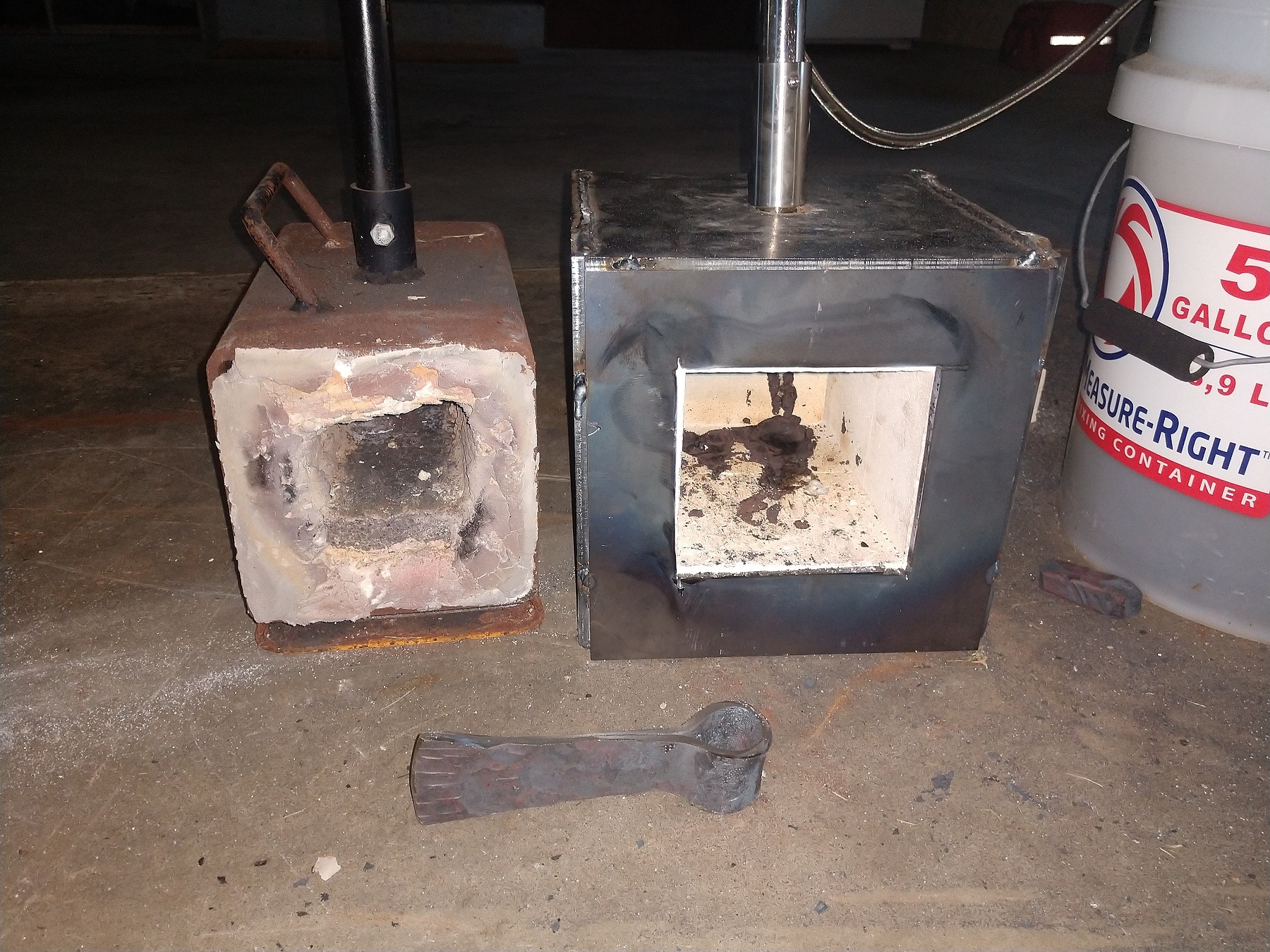Blacksmithing has been experiencing a renaissance of sorts in recent years, brought on by a combination of the availability of information via the internet and popular media getting it out there in front of the public. It’s become quite easy to go pick up a cheap forge on eBay or Amazon and a chunk of scrap steel for an anvil, and go to work.
Having been interested in blacksmithing for decades (I stood and watched the blacksmith at the history fair for a whole day when I was eight), I finally took my shot and bought a forge off eBay a few years back. Little did I know I’d just purchased a cancer-spewing beast.
Many propane forges, like mine, are insulated with ceramic wool. Unfortunately, that ceramic wool throws off fibers that can cause silicosis and even cancer.
To avoid health issues like cancer with ceramic wool forges, either coat the wool with a rigidizer, cover it up with refractory cement, or switch to another form of insulation, like firebricks.
Table of Contents
My Experience with a Ceramic Wool Forge
After years of interest in blacksmithing and metalworking in general, I finally broke down and got myself a forge for a birthday a few years back. After a few forging sessions, I discovered while wandering some blacksmithing forums that I was endangering my health by using that forge.
My forge had been shipped from eBay with raw, uncoated ceramic wool insulation, a health hazard. The heat and airflow of forge burners strips off fine fibers of the insulation overtime and kicks them into the air, and in turn into your lungs. Breathing ceramic wool fibers from uncoated insulation causes silicosis, granulomas, and eventually cancer.
There’s a ton of information about this danger out there, scattered in forums like iForgeIron and older websites that Google isn’t a huge fan of ranking anymore (ABANA and AnvilFire both have great pages circa 1995). Unfortunately you kind of need to go looking to find out that this is dangerous.
The forge I was using did NOT come with the wool rigidized, and I ended up opting to cover up the wool with a castable refractory to solve my problem.
Incidentally, that forge and its seller are no longer on eBay. Amazon has a similar one that ships with the ceramic wool pre-rigidized, another way to solve the problem. If you’re looking to get started forging, check out this forge:
A Decent Pre-Rigidized Propane Forge:

Click Here to check current price on Amazon!
The Dangers of Ceramic Wool Insulation
Anytime something lands in your lungs that shouldn’t be there, that’s no good. It’s especially bad if that something can’t be broken down by your body, and accumulates there.
We’ve all seen the ads for mesothelioma class-action lawsuits, that’s a similar thing, in that case asbestos (another inorganic insulation material) built up in the lungs.
Here, the issue is silica dust from the aluminum silicate fibers of the ceramic wool. Over time, the very fine fibers are worn down by the heat and airflow from the forge burner, and abraded by workpieces banging into the sides of the forge on the way in and out of the forge.
Those fine inorganic particles and fibers get propelled into the air by the forge burner, and then on into your lungs, where they take up permanent residence.
Silicosis, the resulting disease from a buildup of silica dust in your lungs, is a nasty thing. Permanent lung damage, scarring, difficulty breathing, and no prospect of improvement. In fact, OSHA has just implemented new concrete dust exposure rules as research has indicated that silica dust in that form is extremely hazardous to health long-term.
And eventually, repeated exposure to things like silica dust and fine silica fibers can lead to lung cancer.
How to Avoid Cancer
Ceramic wool is a great, low-cost option for insulating forges, kilns, and all manner of other high-heat applications, but it needs to be done right to avoid health hazards like cancer.
There are three ways to avoid issues with ceramic wool: coat it with some sort of rigidizer to prevent fibers from breaking off, bury it under a layer of something else more durable, or simply use another form of insulation, like firebricks.
Coat your Wool with Rigidizer
One way of preventing issues with those pesky small fibers of ceramic wool detaching is to basically glue them in place with a rigidizer.
There are a lot of different options for coating the wool, but a safe bet is to grab a commercially-available product like the one below and follow the manufacturer’s instructions.
A Colloidal Silica Rigidizer:

Click Here to check current price on Amazon!
Bury your Wool in Mortar
If you want a more durable solution, burying the wool is the way to go.
I used this route for my original little forge. Just grab some castable refractory (not refractory mortar or cement, those are different) rated to the temperatures you’re shooting for.
About 2700 degrees Fahrenheit is what I use for all my forge materials, but if you’re using a propane furnace for casting or smelting other metals, you may need to go higher.
Mix it down with just barely enough water to get it to spread well for you, think thick chunky peanut butter. Excess water in your mix kills the strength in any sort of concrete, especially when you’re heating.
Spread a good thick layer on so you can get some strength to withstand accidental bumps from your workpiece.
Hellcote 3000 Castable Refractory:

Click Here to check current price on Amazon!
Ditch your Wool for Something Else
My second generation of propane forge is a steel box my father-in-law and I welded up, with insulating fire bricks instead of ceramic wool.
Insulating fire bricks work great, in that they totally remove concerns about damaging the coating on your ceramic wool. However, the firebricks are made of the same aluminum silicate as ceramic wool, so you need to take care when cutting, grinding, or drilling these bricks.
Wear a mask when machining your firebricks and you should be okay. The bricks themselves are much less likely to shed fine dust and fibers under normal operation, owing to their more rigid structure.
Be aware that you WILL be replacing these firebricks in time. The low-density high-insulation bricks are fairly fragile, to the point that they’ll crack in half if you tip them over.
They also play very poorly with flux, so use a thin high-density firebrick over top of the low-density one that serves as your forge floor.
Many propane forges use these firebricks in combination with some angle iron and threaded rod to make an easily-repairable forge.
2700° F Insulating Fire Brick:

Click Here to check current price on Amazon!
Get out and Forge!
As with anything with combustion, ventilation is key. Try to set up your forge either outside, or in a well-ventilated area. This will help with both carbon monoxide and any sort of particulates that do get blown off your insulation.
Most importantly, once you take the time to make sure you do it safely, get out there and do some forging!

